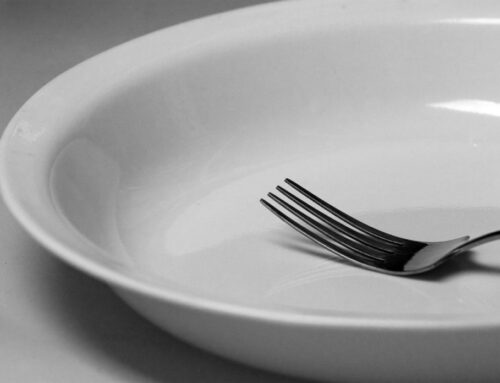Starvation Alert
Answer the following yes or no questions. If your response is somewhere in the middle, then the answer should be “yes.”
- Do you have little or no appetite in the morning?
☐ Yes
☐ No
- Do you usually skip breakfast completely or have a small breakfast (i.e. coffee and a muffin or bagel)?
☐ Yes
☐ No
- Would say that dinner is by far your biggest meal?
☐ Yes
☐ No
- Do you find yourself famished at some point in the day when you crave a snack?
☐ Yes
☐ No
- Do you fall asleep within 3 hours of your last meal?
☐ Yes
☐ No
If you answered, “yes” to three or more of these questions, your body is likely in a state of what I call “starvation alert.” This condition is the opposite of metabolic activation and must be reversed. The point here is WHEN you eat is as important as WHAT you eat. If you have been starving your body, even a small number of calories eaten at the wrong time will lead to rapid gains in fat. It’s simply your body’s system attempting to resist change.
Taking an example from the animal kingdom, when a tiger has had unsuccessful hunts and has gone hungry for an extended period of time, the animal’s body makes internal adjustments that include slowing metabolism, changing hormone levels, and altering sleep patterns. The tiger is now in a state of starvation alert. But the moment the tiger finally makes a big kill and has a large feeding, his body has an interesting and seemingly paradoxical response. He will generally collapse and fall asleep despite the massive amount of calories he ate. This response actually makes a great deal of sense when you think about it. The period of starvation throws the body into a shocked state in which necessary survival adjustments are made including increasing fat storing pathways. During such a state, the bulk of calories taken in are converted to body fat and not to energy. This is the nature of the starvation alert mode—the idea that, due to the period of starvation, the body is put on alert to prepare for another time of deprivation by causing the body to make body fat.
On a human scale, the Japanese Sumo wrestlers best exemplify the principle of starvation alert. If you’ve ever seen them on television, you know how enormously fat they are. Some weigh well over 500 pounds. It seems the Sumo wrestler has long since utilized the theory of starvation alert and basically used it to pile on layers of flab. Like the tiger example, the Sumo wrestler traditionally starves throughout the day and eats only once. The meal, called chanko, is a large meal served in the evening just before sleep. Interestingly, even though the total calories consumed are comparable to the total caloric intake of a normal size man, the problem clearly becomes one of timing and the resulting purposeful fat gain is obvious.
Perhaps the best example to bring my theory of starvation alert into your world is that of Thanksgiving Day. It seems that nearly everyone approaches this heavy calorie day with a similar flawed logic and stumbles into a condition of starvation alert with huge gains in fat. It usually starts as early as the day before Thanksgiving when we begin holding back on eating in preparation for this large meal. For example, we might only have a cup of coffee for breakfast and skip lunch altogether, thinking that if we eat less during the day we will be able to get away with stuffing ourselves. Does this sound familiar?
Just like the Sumo wrestler, we put ourselves in a state of starvation alert. The result is that we finally get to dinner and gorge ourselves. Unfortunately for us, and no different from the tiger or the Sumo wrestler, after we eat we are exhausted. Recall being so stuffed that you discreetly unsnap your belt buckle and rise deliriously from the table only to stretch out on the floor like a fat pig. That is, of course, until someone wakes you up to ask you if you want some pumpkin pie!
So the key to easily reversing the condition of starvation alert so that you can start answering “no” to all of those questions is to reverse these examples. Staying out of starvation alert can be achieved by applying the following two measures:
- Never get to the point that you are famished or starving. Except in the rare fast, never go more than three hours without nourishing your body with a meal, a small snack, or a supplement. And don’t worry. You won’t get fat this way. I know it’s contrary to what you’ve been told. But eating more frequent smaller meals, healthy snacks, and supplements throughout the day is the key to keeping your body from building up fat stores. Remember that a stoked furnace burns hotter, so you’ll actually be burning off slabs of body fat this way.
- Eat your largest meals earlier in the day. Simply put, if you live by the rule that the larger the meal, the earlier it has to be in the day when you eat it, you’ll practically get away with murder! Remember the age-old adage “Breakfast like a king, lunch like a prince, and dinner like a pauper?” Well it’s true. Keep in mind, if you are not hungry in the morning, it’s a signal that you are eating too much the night before. Take it from me, I know first-hand from countless obese patients I’ve seen in clinic that they have nearly all been light morning eaters. In fact, few really got started with their calorie intake any time before noon!






